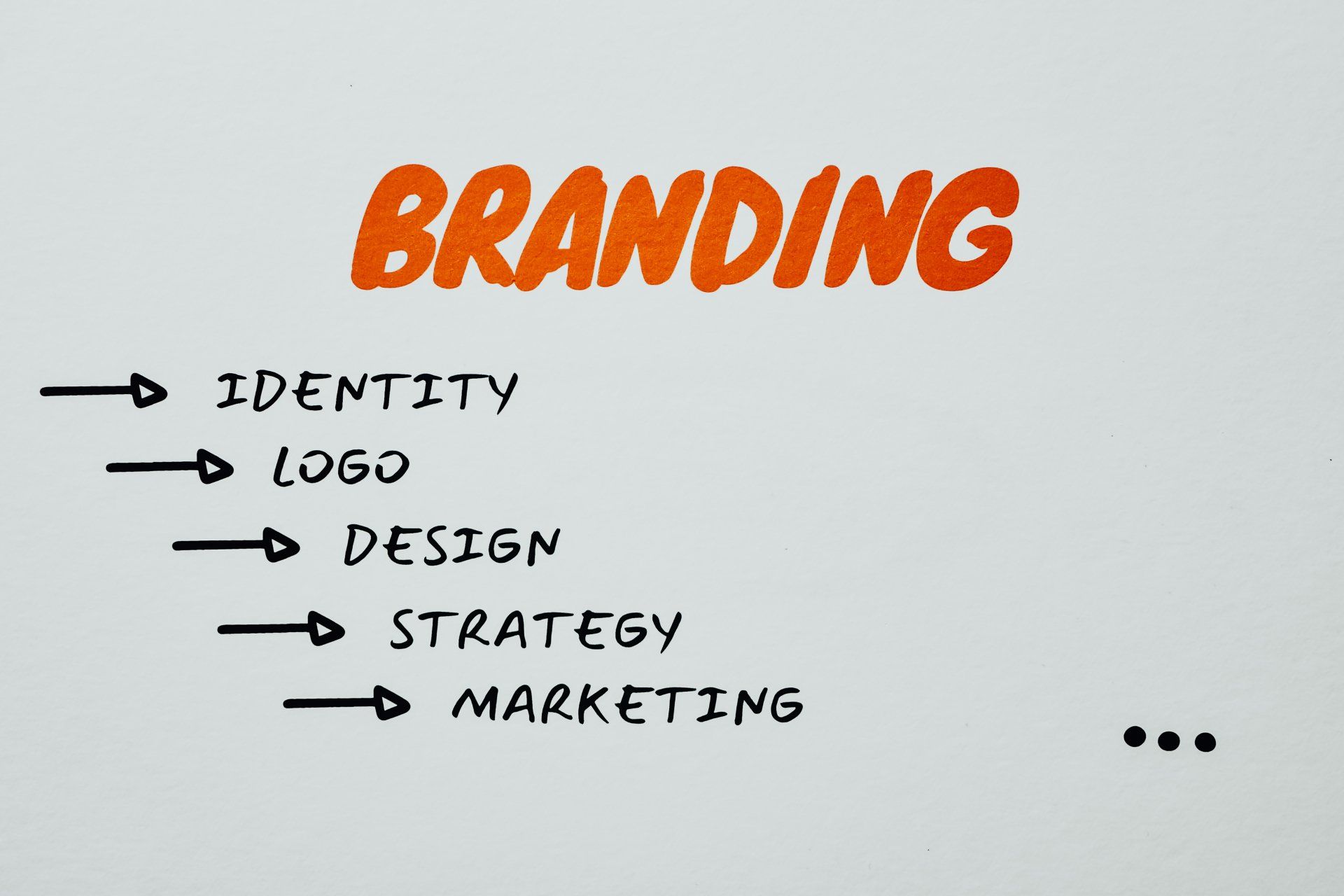Why is Branding important?
What are the benefits of establishing a name brand? Brands that have thrived over the past century have, without a doubt, invested much in developing a coherent and engaging brand identity. Nevertheless, what is branding, exactly?

SO, WHAT EXACTLY IS BRANDING?
Branding refers to the practice of giving a company, product, or service a name and logo that stands out from the competition. It's a crucial advertising strategy for setting your business apart from the competition. The process of branding entails the development of a corporate identity system, including a logo, tagline, and other images. As part of this process, you must develop a memorable slogan or slogan that will stick in the minds of clients and encourage them to keep doing business with your firm.
The process of branding goes much beyond the development of a tagline or emblem. Building an affinity with your clientele is also crucial. Using stories, making the customer's experience one of a kind, and maintaining a unified message across all platforms are all effective ways to do this. In order to be successful, a brand needs to stand out from the crowd in a positive way. There will be a distinct purpose and set of values that the company stands for and that its customers can get behind.
An organization's branding isn't complete unless a marketing plan is developed. This involves making choices about which channels to employ, what material to produce, and how to gauge results. An effective brand strategy will be one that is developed in light of the company's specific aims. Maintaining its usefulness and efficacy requires constant assessment and revision.

TO WHAT END DOES A STRONG BRAND SERVE?
Successful companies all share one thing in common: solid branding. It aids in building brand recognition and may be a deciding factor in winning over new customers. With a memorable brand, clients will have an easier time associating your company with the products or services you offer. Customers are more inclined to buy from you if you can strike an emotional chord with them.
Customers' confidence can be boosted through effective branding as well. Customers will have more faith in your firm and its offerings if you have a distinct brand identity. As a result, you may see an uptick in customer retention and referrals. More clients will be attracted to your firm, and you'll make more money overall, if your brand has a good reputation. Last but not least, effective branding may foster team spirit and pride among workers, which in turn boosts output and satisfaction among customers.
When taken as a whole, a company's ability to market itself effectively thanks to its brand is enhanced. It can help set your company apart from the competition, forge an emotional connection with clients, establish trust, establish a favorable reputation, and boost morale among employees. Having a strong brand is crucial to a company's success because of the many ways in which it may pay dividends in terms of revenue and consumer loyalty.
HOW TO find a brand name:
Clarify your brand's identity.
Branding begins with knowing who you're making products for. Just who are you trying to communicate with? Why do they require this? To wit: what do they want? How would you describe their priorities? Knowing who you're trying to reach will help you zero in on your brand's most important principles and decide how best to convey them.
The next thing to do is draft a statement of purpose. Ideally, this will be a short statement that explains your brand's value and why it was created. Your brand's ideals and objectives should be reflected in the design.
The third action is to develop a brand's visual representation. Identifying features like your logo, color scheme, and typefaces fall within this category. Your brand's visual identity should be consistent in tone and style across all mediums. It ought to stand out from the crowd and be immediately associated with your brand.

Make A Symbol:
While the prospect of designing a logo may seem daunting at first, doing so can actually be quite fun and fruitful if you approach it in the proper way. The following methods will serve as a roadmap as you design your logo.
An initial step in logo design is to generate concepts. Consider the tone you want to set, the aesthetic you're going for, and the colors you'd like to utilize. It's time to start drawing once you have a few concepts in mind. It's up to you whether you'd rather accomplish this manually or electronically. If you want to test out a few concepts and narrow down your design, sketching is the way to go.
Your next task is to perfect the design you've created. Here is the stage at which you can begin polishing your logo's overall appearance with additional elements. Think about how you may bring your logo to life through the choice of typeface, color, and other details. At this point, you should make a digital version of the design. This can be accomplished with the help of a vector graphics editor like Adobe Illustrator. In doing so, you can design a logo that retains its sharpness at any size.
Making your own logo can be a lot of fun. Following these guidelines can help you design a logo that is truly representative of your company.
Branding 101: Find Your Tone
A company that wants to differentiate itself from the competition and stand out from the crowd needs to have a distinctive brand voice. All of your marketing content, from your website copy to your social media updates, should share a consistent "brand voice," or the company's unique personality. To help you find your brand's voice, consider these suggestions.
Step one in creating a brand voice is identifying your intended audience. Determine who you're writing for and think about what they care about. This will guide the development of content that is more likely to appeal to them.
2. Define Your Brand's Core Values After you've figured out who you're talking to, it's time to establish what your company stands for. These are the values that should underpin all you do for your clients. Think about how you want your customers to perceive you and your company.
Third, establish your tone after you've defined your market and established your brand's values. You want this to ring true to your brand's beliefs across all of your platforms of interaction. You should give some thought to the words you employ and the feelings you wish to arouse in your target audience.
By adhering to these guidelines, you may create a distinctive brand voice that will set you out from the crowd. All of your marketing pieces should use the same tone of voice that accurately represents your brand. Defining your brand's voice allows you to produce content that is more likely to attract and retain customers.
The Importance of Knowing When to Refresh Your Brand:
Every time the company's raison d'etre or set of core principles shifts
When the goals or values of your organization shift, it's time to rebrand. If you do this, your brand will reflect the current direction of your business. It will also aid in making sure your brand's messaging is consistent with what you want to convey to buyers.
When your ideal client base shifts:
Whenever there is a shift in your intended clientele base, it's crucial that your brand identity shifts as well. This will ensure that you are able to successfully communicate with your new target group and that your brand is well received by them.
When the branding of your competitors is changed:
It is crucial to monitor the evolution of the brands you compete with and make adjustments as necessary. As a result, you can rest assured that your brand will be able to hold its own against similar products. You can rest assured that your branding will remain contemporary and relevant to your intended market with this method's assistance.
CONCLUSION
In conclusion, a company's branding is crucial to its success. It's a great way to set yourself apart from the competition and build brand recognition. It's useful for making an indelible impression on customers, gaining their trust, and establishing credibility. Additionally, a solid brand can boost sales and patronage by appealing to more consumers.
Determining who you're marketing to, writing out your brand's purpose, developing your brand's visual identity, giving it a voice, and keeping it fresh over time are all crucial steps in developing a successful brand. With these guidelines in mind, you can build a powerful brand that will attract customers and propel your company to new heights of success.










